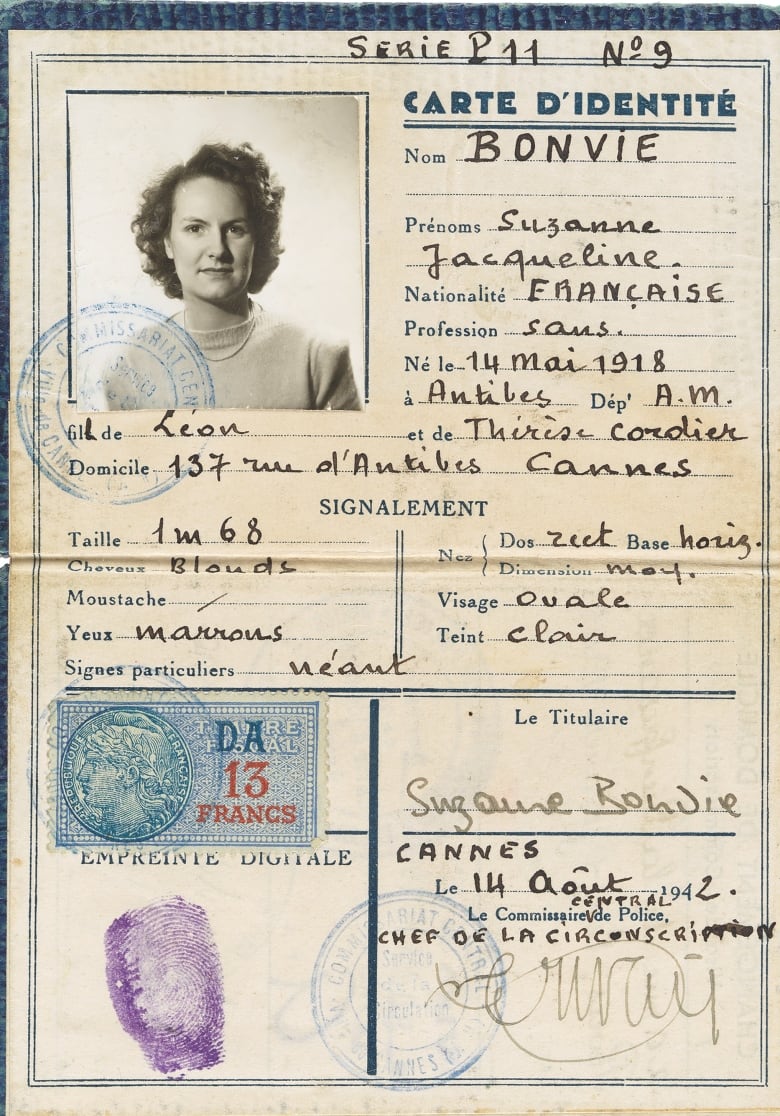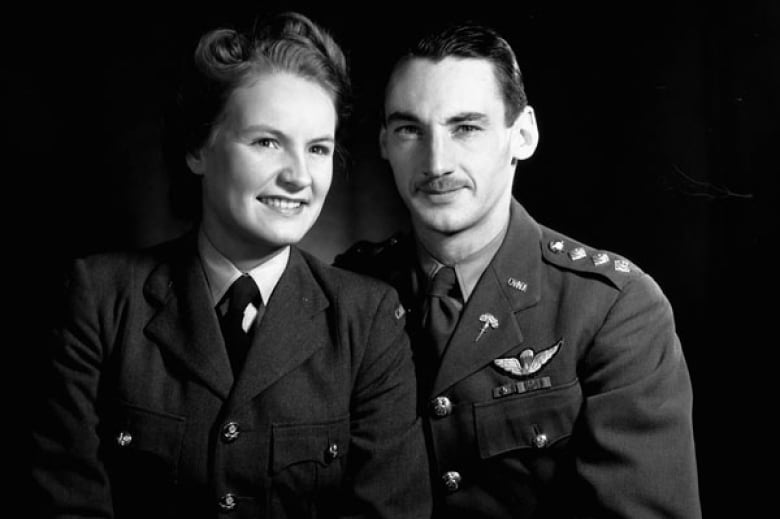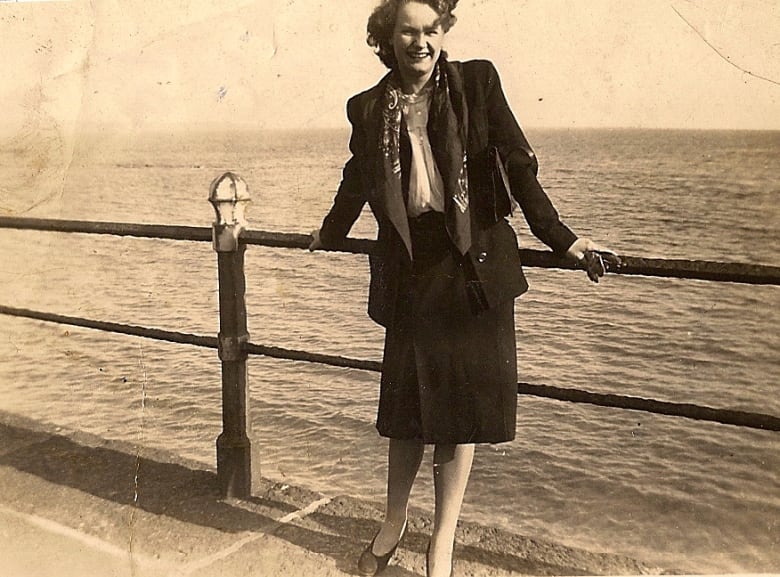Warrior woman: How a British secret agent who became a Canadian helped pave the way for D-Day
Sonya d'Artois was just 20 when she parachuted into occupied France

While Allied troops were still preparing for one of the largest military operations in history, a 20-year-old woman parachuted into occupied France under the cover of darkness and injured her back and shoulder.
It was a flawed rendition of the four practice jumps Sonya d'Artois (originally Butt) had under her belt before undertaking the riskiest assignment of her life.
But given the rumours she'd heard about others being shot or captured the moment they landed, her jump on May 29, 1944 nine days before D-Day was still a success.
D'Artois's assignment as a secret agent behind those lines was never going to be easy: there were setbacks, mishaps and near misses that nearly cost her life.
But her subsequent accomplishments in helping the French resistance sabotage German efforts, along with the clandestine work of dozens of other female agents, helped the Allied forces make their the D-Day landings on June 6, 1944, and ultimately win the Second World War.
CBC special live coverage:

"Never before had so many women been so closely involved in one of the great operations of a major war," said British historian Marcus Binney, author ofThe Women Who Lived For Danger: The Women Agents of S.O.E. in the Second World War.
"Their support for the D-Day landings, in advance of them and after them, was enormous, and was recognized by [Dwight] Eisenhower, by [Winston] Churchill by everybody."
'Set Europe ablaze'
D'Artois was one of 3,000 secret warrior women of Britain's Special Operations Executive (SOE), founded in 1940 at Churchill's request.
The organization, which also employed thousands of men, including many Canadians, was intended, in Churchill's words, to quietly "set Europe ablaze."
At 19, D'Artois was one of the youngest recruits, but she ticked many boxes: she was fluent in French, fit and willing to take risks.

By evading capture and ultimately surviving the war eventually growing into old age as a Canadian mother and then grandmother d'Artois had displayed inordinate skill and determination.
They are traits that d'Artois displayed early in life.
After her parents separated, d'Artois lived with her mother in southern France.
When the war erupted, she was a teenager and alone at school while her mother happened to be visiting the U.K. She had no passport or money, and yet she made her way alone across an international border all the way to the U.K.
Reinventing her story
When she returned to France a few years later as a British agent, she once again had to improvise when the container carrying her clothing was discovered by a German patrol in the Le Mans area, likely alerting them to the arrival of a female agent.
She had to reinvent her story which had her working in the couture business and visiting from Paris.
"We decided once they knew there was a woman there, she'd probably be hiding," she said in an interview for a documentary back in 2002.
"So we tried to fool them by not hiding."

That meant she would frequent black market restaurants and socialize with German soldiers. All the while, the rest of the time, she was co-ordinating ambushes against them.
She was among several examples of women who proved that they were better suited than menfor the task of clandestinely operating inside enemy territory.
"If you were in occupied France and you were a young man, they'd say, 'Why aren't you doing your military service, why aren't you doing work service in Germany?' " said Binney.
"Women could travel more freelyand they could be couriers. They could be radio officersor indeed weapons officers.
"They were very courageous."
Effective instructor
At one time or another in 1944, D'Artois wore all those hats.
Trained at the SOE as an explosives expert, she would prove an effective instructor for French resistance fighters on the ins and outs of destroying rail lines and communications lines. She also covered countless kilometres on bicycle as a courier, recruiter, co-ordinator and intelligence gatherer.
"This was the job that we were there to do," she said in the 2002 documentaryBehind Enemy Lines: The Real Charlotte Grays.
"We knew the reason for it. It was to harass the Germans and break up their lines of communication and troop movement. Just obstruct them as much as possible."

Her code name was Agent Blanche (or sometimes, Madeleine), but her fake papers identified her as Suzanne Bonvie.
More than once, she would have to run a gauntlet of German checkpoints, hoping they weren't on to her.
Once, she said in one interview,she narrowly escaped an assassination attempt meant specifically for her when she decided to avoid a resistance meeting purely on instinct.
She also once dropped her purse, which contained a pistol, on the floor of one of the restaurants she frequented, risking blowing her cover.
'Perfectly calm'
In the chaos of liberation in 1944, she and a colleague, Sydney Hudson, were shot at, and while he was shot in the shoulder, she escaped unscathed though her jacket was riddled with bullets.
"I never saw her not have a cool head," Hudson, who was her team leader in France, said in the 2002 documentary.
"Whatever the situation was, she remained perfectly calm."
As a young woman, "she was a rabble rouser," Nadya Murdoch, d'Artois's daughter, said in an interview in Montreal.
"She liked to get into trouble and she did all sorts of things with her brother that got her into trouble."
She learned how to handle explosives. She learned how to make bombs. She learned how to blow up bridges.- Nadya Murdoch
But in extensive and arduous training in the U.K., where she was treated no differently than the men, she matured quickly, said Murdoch.
"She learned how to handle explosives. She learned how to make bombs. She learned how to blow up bridges. She learned how to pick a lock. She learned how to attack somebody. She learned how to do silent killing.
"She learned a lot."
Falling in love
It was also during training in early 1944 that she met Guy d'Artois, a French-Canadianmember of the SOE.
Both had decided to specialize in explosives. They were then paired up to go on a mission together and soon became inseparable. They had fallen in love.
They decided to get married just before being deployed to France.

"Then they separated us, we couldn't go on the same mission," d'Artois said in that 2002 interview.
Superiors were concerned they would be liable to spill secrets if one of them was captured and tortured in front of the other. So they were deployed to different parts of France hundreds of kilometres apart.
They each did their part preparing for D-Day. In preparation for her mission, d'Artois was issued with a pistol and a suicide pill. She landed in France nine days before D-Day exactly two weeks after her 20th birthday.
'Quite a lot of damage'
When the parachutes started raining down on Normandy, d'Artois stepped up her team's efforts to sabotage German efforts to move towardsAllied troops.
"Because we knew the Allies had landed, we had a lot more confidence to do what we had to do. It was open warfare and we managed to do quite a lot of damage."
D'Artois was lucky to avoid capture unlike some of her colleagues who were imprisoned and killed.
When American soldiers came in as liberators in August1944, she was taken away to have her head shaved to mark her as a collaborator until her colleagues intervened and vouched for her identity as a British agent.

It would be several more months before she would be reunited with her husband Guy in France.
After the war, they moved to Canada and after relocating repeatedly to follow her husband's military career, they settled with their family in Montreal. She preferred to stay out of the limelight, out of deference for her husband, who served with the Royal 22nd Regiment, and was a decorated war hero in his own right.
Little did many know she had been made a member of the Order of the British Empire for her contributions to the war effort.
Remembered today
Seventy-five years after she jumped into France, she's remembered on the beaches where all those young men landed in her footsteps.
Some of her belongings, including a compact and a cigarette case, are included in a special exhibition, Great Women During the War 1939-1945, at the Juno Beach Centre, developed by the Canadian War Museum, about women who participated in the war.

Both she and her husband Guy have passed away Sonya d'Artois died in Montreal in 2014 at age of 90.
But members of their family, including Murdoch, have come to Juno Beach from Canada to revive their memory.
D'Artoisis depicted as a daring, gutsy agent, but is known to her family only as a loving mother and grandmother.
She was "very humble and just soft and gentle," said granddaughter Michaela d'Artois, 28. "And I think that's really beautiful to be both: To be very strong and brave. But the most brave thing is to be gentle and soft"
Murdoch said of her parents: "Their courage and their bravery was pretty incredible."
Corrections
- An earlier version of this story said Sonya d'Artois was one of 3,000 women who landed in France ahead of the Allied troops days before D-Day. In fact, she was one of 3,000 women who were part of Britain's Special Operations Executive and one of just dozens who landed in France.Jun 05, 2019 1:50 PM ET
With files from Matt Lapierre and Stephanie Jenzer












_(720p).jpg)


 OFFICIAL HD MUSIC VIDEO.jpg)
.jpg)



























































































